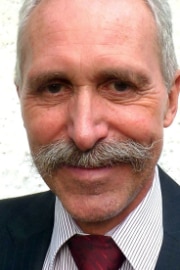Gold rush in Mongolia
Mongolia provides an example of how mining became a threat to the environment and human health at the beginning of the millennium. In this country, artisanal gold-mining experienced a boom but with tragic consequences. For a large part of the rural population gold mining appeared to be the only possibility of making even a modest income. Owing to harsh winters and the economic restructuring taking place, many former herder communities lost their livelihoods. A large part of this poorer population was therefore forced to find another source of income just to survive. Many of them took up artisanal, or small-scale, mining.
In their search for gold, they re-opened old, abandoned mines or dug new holes and shafts, working mostly with only the most basic hand tools and without any safety precautions or a legal basis.
Artisanal gold-mining and its social and environmental impacts quickly got out of control. Because the miners worked with no regard for the impact of their work on the environment, other groups saw artisanal mining as a threat to the natural environment and Mongolia’s rural traditions.
This created social tensions on the one hand – mining families were regarded as criminals and increasingly became the object of discrimination – while on the other, their mining activities harmed the soil and the environment. One of the main reasons for this was the usage of mercury to recover gold from the ore. This method, known as amalgamation, is simple and cheap and thus became a widely used by the miners.
Legalisation instead of suppression
In 2005, the Mongolian government decided to address these problems. Together with the SDC, it initiated a project to promote sustainable small-scale mining, which became known as the Sustainable Artisanal Mining Project (SAM). SAM developed a solution on how to give these hitherto illegal gold-mining activities a legal status and make the miners responsible for their activities. «The main concern was to create a legal basis for the miners’ activities, while placing them under certain obligations», explained Bayarsaikhan Altanbagana, SAM national project coordinator.
Alternatives
Together with providing a formal basis for their activities, the miners were required to comply with social and environmental standards. In order to minimise the environmental impact of mining, for example, each miner had to present in advance a rehabilitation plan for the land they claimed and worked.
In 2008, the Mongolian government placed a total ban on the widespread practice of using mercury. «But this ban just made the situation worse», the national project coordinator recalls. «Instead of recovering gold from ore in the mines, the miners continued to do it clandestinely in their homes», he explains. This resulted in children and other family members being exposed to mercury, which had not been the case before. Exposing children to toxic chemicals early in life can result in chronic illnesses, permanent impairments and disabilities, or even in premature death.
The SAM project played a decisive role in this phase too, demonstrating that ore can also be processed without using mercury, namely with the aid of a shaker table. With the SDC’s assistance a pilot factory was built which no longer used mercury. «The shaker table method is now applied in three mining regions», says Bayarsaikhan Altanbagana.
A provisional regulation developed by SAM was adopted in 2010 by the Mongolian parliament as a permanent legal provision applicable to the entire small-scale mining sector. «This was a major breakthrough», says Bayarsaikhan Altanbagana. With the nation-wide legalisation of the sector, many artisanal miners gained investment security and legal access to land for mining. This allowed them to invest in better technology and safety, and this in turn resulted in improved health, fewer accidents and higher productivity, while securing livelihoods.
Pollution as a cause of death
Environmental pollution worldwide disproportionately affects the health of poor and marginalised population groups such as the Mongolian artisanal miners. This is one of the conclusions of the current report of the Lancet Commission on Pollution and Health.
In 2015, soil, air and water pollution was responsible for the premature death of an estimated nine million people. Environmental pollution kills more people than smoking, hunger and natural disasters combined. It causes 15 times more deaths than all of the wars put together. Nearly 92% of deaths caused by pollution occur in developing and transition countries. With these tragic figures, the Lancet Report underscores the clear link between pollution and health.
The main air polluters are the rich countries due to their high consumption of fossil fuels, and the developing and emerging countries that burn large quantities of wood and other biomasses. The main water and soil polluters are coal-fired power stations, chemicals manufacturers and the mining industry.
With SAM, the working and living conditions of vulnerable populations became more healthy and improved for the long term. However, the Lancet Report points out that the connection between environmental pollution and health is largely ignored by international development actors. Making this link would be a major step forward. Effective monitoring of environmental pollution would improve health conditions, reduce poverty, ease access to clean water, extend social justice, facilitate sustainable urban planning, protect water as well as land, and significantly slow down climate change.


